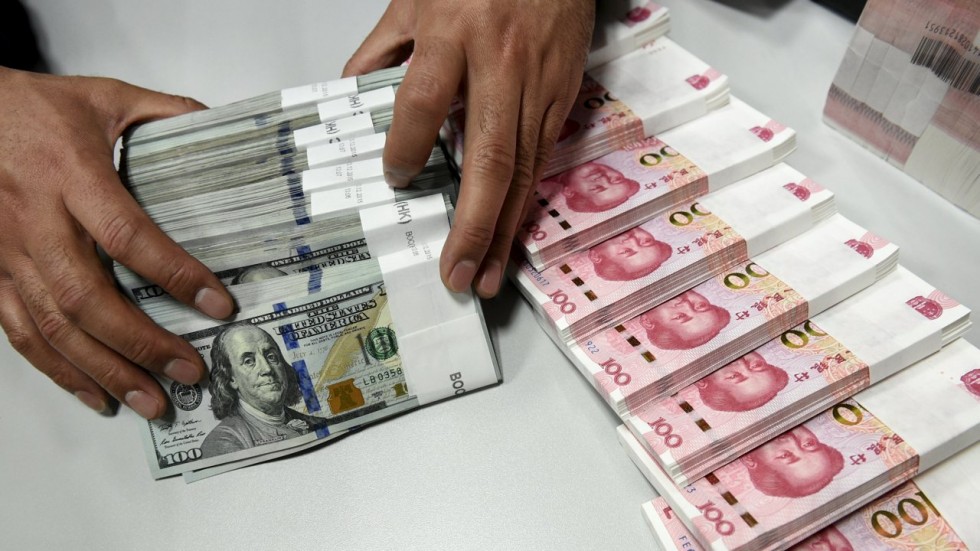- China’s GDP Grows 6.7% as Expected
While concerns are growing over China’s growing debt and the risks to its financial system.
China‘s economy expanded at a steady 6.7% in the third quarter and looks set to hit Beijing’s full-year target, fueled by stronger government spending, record bank lending, and a red-hot property market that are adding to its growing pile of debt.
Wednesday’s data painted a picture of an economy that is slowly stabilizing but increasingly dependent on government spending and a housing boom for growth, as private investment and exports remain stubbornly weak.
Some economists believe Beijing has had to “double down” on stimulus this year to meet its official growth range of 6.5 to 7%, and say the government’s obsession with meeting hard targets may hurt both planned reforms and the long-term health of the world’s second-largest economy.
“So far this year they have clearly chosen to do everything they can to meet the growth targets, and now there is a little bit of an upward surprise from the housing market which actually will help them with GDP growth this year,” said Louis Kuijs, head Of Asia economics at Oxford Economics in Hong Kong.
“The question really is, is the leadership willing to move to somewhat lower growth targets in order to put growth on a more sustainable footing, or will it feel obliged to continue to hang on to those very high growth targets.”
The economy grew at the same clip in the third quarter year-on-year as in the first and second quarters, as analysts polled by Reuters had expected. Government infrastructure projects and the property boom have spurred prices and demand for raw materials and goods from cement and steel to furniture.
On a quarterly basis, it grew 1.8%, again in line with expectations but easing slightly from the previous period.
PROPERTY MARKET BIGGEST RISK FOR NOW
Economists believe the greatest near-term risk for China is a possible correction in the high-flying property market, which accounts for about 15% of GDP.
Real estate investment accelerated in September and home sales soared, highlighting persistent investor demand even as more cities tighten measures to curb prices.
Property investment growth ticked up to 7.8% in September on-year, and property sales surged 34%, though new construction starts fell 19.4%, suggesting sentiment among builders may be shifting as the government looks to cool the buying frenzy.
A wave of restrictions imposed on buyers in major cities since early October has resulted in a sharp drop in sales and authorities are stepping up pressure on speculators.
Shanghai said on Tuesday it had punished some property agencies for falsifying contracts and had launched probes into some developers suspected of raising prices without authorization.
Most economists do not expect house prices to collapse, arguing the market is supported by steady migration to bigger cities, but memories are still fresh of authorities’ heavy-handed attempt to cool surging stock markets last year, which triggered a crash and an unprecedented government rescue.
The property craze has also heightened concerns about China‘s growing debt and the risks to its financial system, as much of the record loan growth has been driven by mortgages.
China‘s debt has soared to 250% of GDP and the Bank for International Settlements (BIS) warned in September that a banking crisis was looming in the next three years.
“We think that the cooling measures in property market will weigh on China‘s economy over the coming quarters,” Commerzbank economist Zhou Hao in Hong Kong said in a note.
But statistics bureau spokesman Sheng Laiyun said “the impact (of property adjustment measures) on the economy will not be very big” in the short-term.


 Billionaire Watch3 weeks ago
Billionaire Watch3 weeks ago
 Startups4 weeks ago
Startups4 weeks ago
 News4 weeks ago
News4 weeks ago
 News4 weeks ago
News4 weeks ago
 Bitcoin4 weeks ago
Bitcoin4 weeks ago
 Naira4 weeks ago
Naira4 weeks ago
 Forex3 weeks ago
Forex3 weeks ago
 Treasury Bills4 weeks ago
Treasury Bills4 weeks ago
























